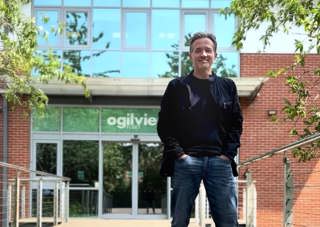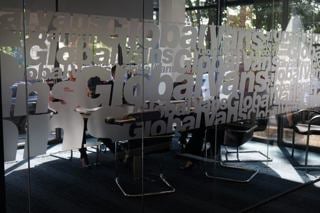Bridgestone is investing nearly £5m in its retread tyre factory in Bourne, Lincolnshire, in a bid to boost its share of the hot-cure retread truck tyre market.
The three-year investment programme has already resulted in eight additional hot-cure presses being installed.
A new hot-cure rubber extruder and two new buffing machines have arrived too, along with other ancillary equipment.
The programme should lead to a significant rise in Bourne’s output, says Bridgestone. At present it makes 70,000 retreads annually, but the total could increase to up to 100,000 a year over the next five years, the company predicts.
Spread across three adjacent sites, the plant, which was acquired by Bridgestone in 2005, operates round-the-clock five days a week. The 60-strong workforce could rise to 75 as output grows.
Until recently, pre-cure retreads dominated the site’s production schedule, accounting for 60% of the tyres it built.
Switching the emphasis away from them is a reaction to marketplace demand. The British truck retread market is 80% hot-cure, admits Bridgestone.
As a consequence pre-cures had shrunk to 40% of factory output at the time of writing, with hot-cure now dominant.
“We’re growing the hot-cure range and we’re retiring some of the pre-cure products,” says Mike Howling, service operations business partner at Bridgestone.
The global tyre giant bought US-based retreader Bandag in 2009 and continues to use its brand-name. Bandag built its business around pre-cures, which explains the bias in favour of them until now.
That has clearly changed so far as the UK is concerned. Seventeen new hot-cure variants are scheduled to be manufactured under the Bandag Hotread banner, with eight already available.
The rest will be introduced during the course of this year.
Hotread line-up
The Bandag Hotread line-up being rolled out includes the M-Drive 001 drive-axle tyre in 295/80 R22.5 and 315/80 R22.5 sizes and the R-Trailer 002 trailer tyre as a 385/65 R22.5.
With pre-cures, ready-formed treads supplied in 10m-long rolls brought in from a Bridgestone plant in Belgium are applied to casings using an extruder/builder.
The tyre is then placed in a rubber bag, all the air is evacuated from the bag, and the tyre is cured in an oven at 115 degrees C for four hours.
With a hot-cure, new rubber is applied to the circumference of the casing which is then placed in a press which moulds on the tread pattern. It does so at a temperature of 155 degrees C maintained for up to 90 minutes.
Hot-cures have a more appealing appearance than pre-cures and are said to be slightly cheaper although the investment required to produce them is higher. Pre-cures are said to last longer because of the density of the tread rubber.
Running on retreads can help cut tyre costs per kilometre by almost one-third compared with relying solely on new tyres, Bridgestone contends.
Tyre labelling has yet to be applied to retreads, but Bridgestone is anticipating its introduction.
Retreads are facing stiff competition from budget-price new truck tyres, often with unfamiliar names, being shipped in from the Far East.
While they are undoubtedly cheap, the saving they offer may not be as great as it appears to be at first sight, says Bourne plant manager Dan Edwards.
“The truth is that they’re designed to be single-life tyres,” he adds; rather like environmentally-unfriendly plastic coffee cups. They are usually not suitable for retreading.
By contrast, premium-brand good-quality truck tyres can be retreaded and given a second life, and potentially retreaded again for a third life if they are well-maintained.
Cheap-and-cheerful imports lack the environmental credentials retreads enjoy.
Environmental benefits
Around 75% of the material used to make a new tyre is recycled when a retread is built, with 32kg of rubber and 14kg of steel saved.
Making a retread uses up to 70 litres less oil than making a new tyre, and up to 80% less CO2 is emitted while it is being manufactured.
Still making use of the Bulldog name, in 2022 alone Bourne recycled 4,400 tonnes of scrap tyres and 520 tonnes of rubber dust, says Bridgestone.
This adds up to savings of four million litres of oil, 2,000 tonnes of rubber, 900 tonnes of steel and almost 4,000 tonnes of CO2 emissions compared with the equivalent production of new tyres, the manufacturer claims.
The factory’s new machinery is more productive than existing equipment says Bridgestone, and more energy-efficient. The buffers consume 25% less energy, the presses 15% less, and the rubber extruder 10% less.
Andrea Manenti, Bridgestone north region vice-president responsible for the UK and the Republic of Ireland, says: “We firmly believe that retreads have got to replace cheap imports.”
Hailing the advantages of retreads is in line with Bridgestone’s aim to achieve greater sustainability in all its activities.
It wants the whole group to use 100% sustainable materials and be carbon-neutral by 2050 and intends to increase the share of recycled and renewable materials in its tyres to 40% by 2030.
It is also working with Michelin in a joint initiative to increase the use of recovered carbon black in new tyres.
The environmental benefits retreads can deliver are being latched on to by fleets that are becoming more and more conscious of the importance of sustainability.
If they are tendering for contracts they will invariably be asked to report what they are doing to minimise their carbon footprint in the tender document. They can highlight their use of retreads in their submission.
Regulations likely to come into force in the European Union later this year may make life more difficult for importers of cheap truck tyres by compelling them to provide full particulars of the raw material content of what they are bringing in; and whether it has come from a responsible source.
Bridgestone is at pains to stress its contribution to the production of sustainable natural rubber in Southeast Asia and West Africa.
It is also investing in the development of an alternative to natural rubber involving a plant called guayule, which can be grown in arid areas of the world; and could potentially be used as a source of biofuel.



















Login to comment
Comments
No comments have been made yet.